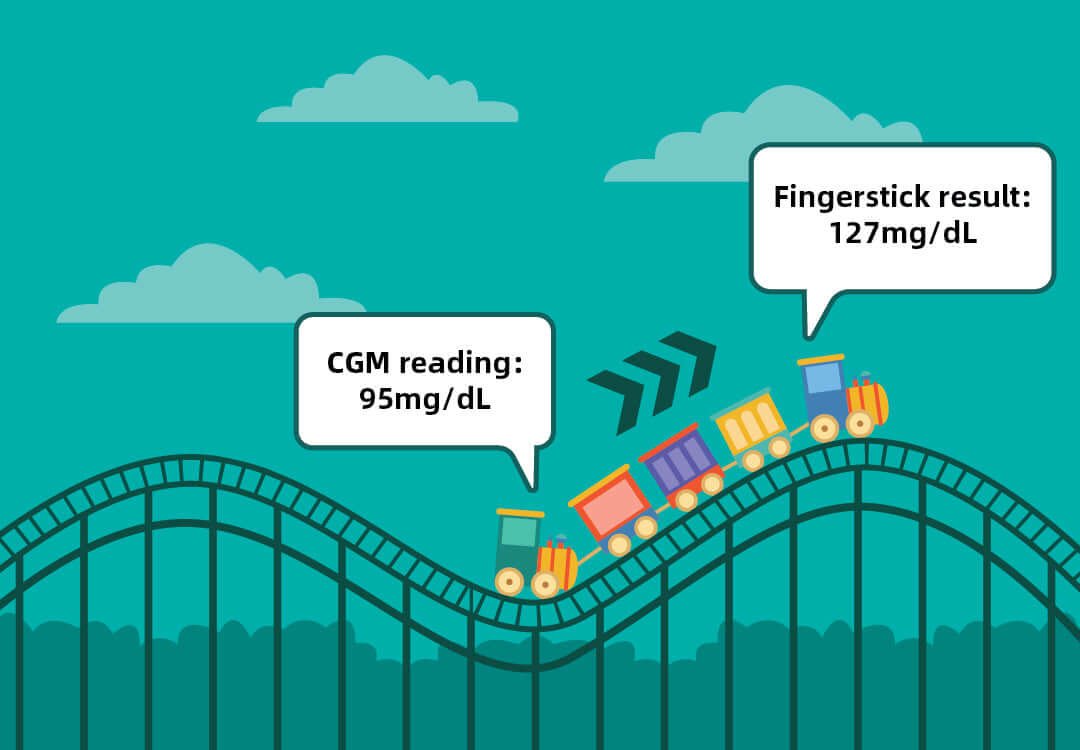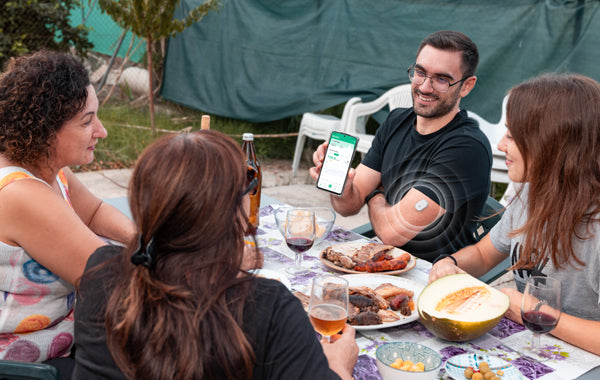Importance of CGM Accuracy
Continuous Glucose Monitoring (CGM) is a technology that allows individuals, particularly those living with diabetes, to monitor their glucose levels continuously throughout the day and night. Reliable CGM data serve as a critical foundation for making informed decisions about insulin dosing, dietary choices, and overall lifestyle adjustments.
Inaccurate readings can lead to either overcorrecting or underestimating glucose levels, which can have serious consequences for individuals with diabetes, potentially leading to hypoglycemia (dangerously low blood sugar) or hyperglycemia (high blood sugar), both of which can be life-threatening.
Accurate CGM data not only help prevent acute complications but also empower individuals to fine-tune their treatment plans, achieve better glycemic control, and reduce the long-term risks associated with diabetes.
Definition of Accuracy in the Context of CGM

In the context of CGM, accuracy can be viewed in two different ways: absolute accuracy and relative accuracy. Absolute accuracy is the difference between the CGM reading and a reference method, such as a fingerstick test or lab result. Relative accuracy is how well a CGM performs compared with other CGMs.
When people talk about accuracy with CGMs, they usually refer to how closely the device can measure your blood sugar levels compared with Blood Glucose Meter(BGM) readings taken simultaneously. Some people use multiple glucose meters and compare their results with the CGM readings, so they can confidently decide if they should adjust insulin dosage based on their CGM data.
In contrast to BGM, CGM provides a continuous stream of glucose data, allowing for a comprehensive understanding of glucose patterns, trends, and fluctuations over time. However, we must acknowledge the fact that CGM is a measurement taken under the skin, sampling the interstitial fluid, rather than directly measuring the glucose present in the blood. Hence, there will always be slight discrepancies between glucose readings from CGMs and those from BGMs. This is universally true for all CGM devices because it takes some time for your interstitial fluid to adjust to the same glucose concentration as the blood.
Factors that Affect CGM Accuracy
I.Sensor Wearing Location
For the SIBIONICS CGM, the GS1 sensor detects the concentration of glucose from your interstitial fluid. We recommend that you avoid placing the sensor directly over your muscle, as muscle has very little detectable interstitial fluid.
The ideal location to apply your sensor is in the fatty part of the back of your upper arm. The SIBIONICS GS1 sensor will not enter your muscle layer, therefore, CGM accuracy will not be affected.
II. Natural Response to Introducer Needle
When the CGM sensor is initially inserted, an introducer needle is used to implant the sensing electrode under the skin, leading to a minor incision.
During the healing process of this incision, white blood cells may accumulate, forming a proliferative encapsulation that consumes the nearby glucose. This can potentially result in lower monitored glucose values.
III. Excessive Pressure on the Sensor
Most CGM sensors are small, lightweight, and waterproof, however, this does not mean users should completely forget about the presence of the sensor.
Applying excessive pressure to the sensor can compress your body’s tissue, thus affecting the interstitial fluid's ability to reach the sensor and the CGM accuracy. When wearing the sensor, try to:
A:Sleep on your back or the side that’s not wearing the CGM sensor
B:Avoid wearing tight-sleeve clothing that might exert pressure and compression on the skin and tissue underneath
IV. Rapid Changes in Glucose Levels
Engaging in high-intensity exercises or eating a large, high-carbohydrate meal, can cause rapid changes in glucose levels. CGM systems may not capture these changes as quickly as fingerstick blood glucose meters.
Users should be aware of the CGM's lag time and consider it when making decisions about insulin dosing or food intake.
V. Users’ Physical Conditions
When a person experiences severe dehydration or subcutaneous edema, a swelling that occurs in a specific skin layer, it can influence the glucose concentration of interstitial fluid, thus affecting the monitored glucose values.
For individuals affected by peripheral vascular disease - a slow and progressive circulation disorder, their CGM sensors also can not accurately reflect their real-time glucose levels.
VI. Surgeries and Medications
Going through surgeries or taking certain interfering medications, such as acetaminophen (paracetamol) or ascorbic acid (vitamin C), can interfere with CGM sensor accuracy.
Before purchasing a CGM sensor for diabetes management, patients should first consult their healthcare provider to obtain the best results out of a CGM.
The Role of MARD in Measuring Accuracy
The MARD(Mean Absolute Relative Difference) value quantifies the average discrepancy between CGM sensor readings and reference blood glucose measurements, which is expressed as a percentage. It provides a valuable metric for evaluating the overall performance and reliability of CGM devices, helping both healthcare professionals and patients make evidence-based decisions regarding diabetes management.
A lower MARD value indicates higher CGM accuracy. Most CGMs on the market currently have a higher-than-9% MARD value. With CGM accuracy and reliability in mind, the R&D team at SIBIONICS has finally achieved an ultra-low 8.83% MARD value after relentless research, reiterations, and optimizations.
Key Takeaways on CGM Accuracy
Like any technology, CGM has its limitations, too. CGM does provide real-time glucose data, but it's not the most accurate compared to fingerstick measurements. Even though they offer valuable insights, CGM data may not always align perfectly with traditional fingerstick blood glucose measurements. Inaccuracies can occur due to factors like sensor-wearing location, interstitial fluid dynamics, and more. Therefore, it's important to view CGM data as a helpful tool for trends and patterns rather than as a precise replacement for traditional monitoring.
By maintaining realistic expectations, users can better interpret CGM data, make informed decisions about insulin dosing or dietary choices, and cooperate effectively with healthcare providers to optimize their diabetes management strategies.
€62,99
14-Days Continuous Glucose Monitoring
Highly Accurate Sensor Readings
Exportable AGP Reports
Shareable Real-Time Glucose Data
Customizable Glucose Alarm
User-friendly App
Calibration Free
No Scanning
IP28 Waterproof
… read moreSIBIONICS GS1 CGM-Continuous Glucose Monitoring System












